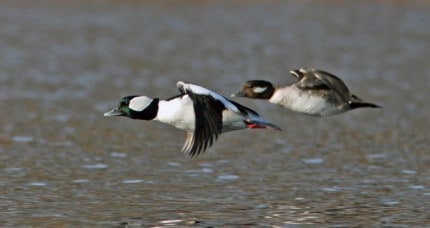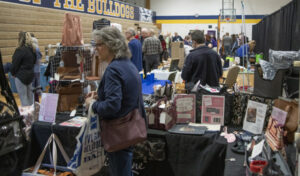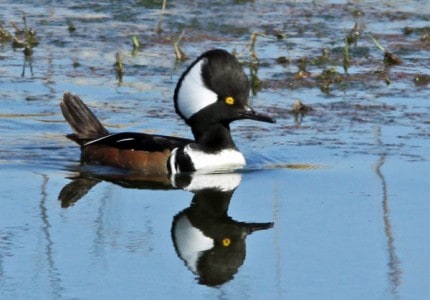
(Column and photos by Tom Hodgson with special thanks to the Waterloo Natural History Association.)
The fall waterfowl migration is all about duck blinds, decoys and sitting in misery for hours in the cold and rain in hopes of getting a shot at a duck that is flying by at 40 miles an hour.
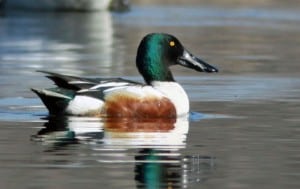
The spring migration brings out a very different crowd. They are armed only with binoculars and spotting scopes and are just there to watch. Meanwhile, the ducks are putting on quite a show as they pause on area lakes to rest, feed and court on their way to breeding grounds as far north as the Arctic Circle.
We are now in the thick of the spring migration. Local lakes are dotted with ducks with interesting names like bufflehead, goldeneye, northern shoveler, pintail, gadwall and more. More than 20 species of ducks will be passing through in the coming weeks. Most will not be seen again until their return migration in the fall. A few, like the mallard, wood duck, hooded merganser and blue-wing teal will stay to nest.
Of the two migrations, the spring may be the most interesting. The ducks are now decked out in their finest breeding plumage and are engaged in interesting courtship behaviors.
Those who live on area lakes can watch all the activity from the comfort of their living rooms, although the best viewing will require good quality binoculars. More powerful spotting scopes mounted on tripods are even better, for the ducks often congregate quite some distance from shore.
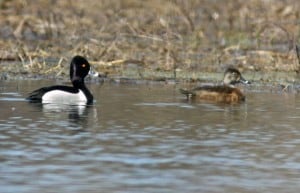
Fortunately for those of us who do not have lakeshore property, there are still plenty of viewing opportunities as many area lakes have at least some public access. Good light is important. One should always be between the sun and the ducks for best viewing. This means that viewing from eastern shore lines is best in the morning and western shorelines in the afternoon.
North facing locations are good all day, while those that face south will never have the best light.
Here are some good viewing areas in and around the Waterloo Recreation Area.
One of the real hot spots is a wetland at the corner of Dunn and Cutler Roads. The Dunn Road vantage point is good in the morning while Cutler Road viewing is good all day, as it faces north. There is a high berm that blocks the viewing on Cutler Road, but there are breaks in it. Stay on the county right of way as this is private property. Mallards, wood ducks, gadwalls, hooded merganaers, ring-necks, lesser scaup, buffleheads and northern shovelers have all been seen there. This location is accessed by taking Welch Lake Road north from Seymour and following it until it turns west and becomes Cutler Road.
Happy viewing.
